 W
WStephen Moulton Babcock was an American agricultural chemist. He is best known for his Babcock test in determining dairy butterfat in milk processing, for cheese processing, and for the "single-grain experiment" that led to the development of nutritional science as a recognized discipline.
 W
WOtis Warren Barrett was an American agriculturalist. He spent his early career collecting insects in Mexico, where he became a museum curator and agent for that country's exhibition at the 1900 Paris Exposition. In 1901 Barrett went to Puerto Rico as a US Department of Agriculture entomologist and botanist and afterwards worked with the department's Office of Seed and Plant Introduction. In 1908 he was appointed director of agriculture for the Portuguese colony of Mozambique.
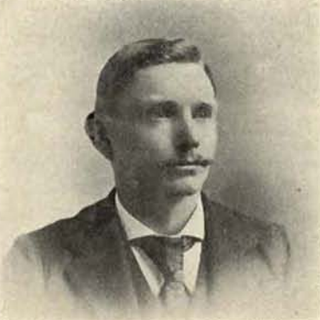 W
WDavid Arthur Brodie was an American agriculturalist and college football coach. He served as the head football coach at Washington Agricultural College and School of Science—now known as Washington State University—for one season, in 1896, compiling a record of 2–0–1.
 W
WGlenn W. Burton was an American agricultural scientist notable for his pioneering work in plant breeding, development of pearl millet in 1956 and for other contributions that helped increase world food production.
 W
WAlan Thacker Busby was an American animal scientist and educator who taught at two historically black universities. He was the first African American to attend the University of Connecticut, earning his bachelor's degree with honors in 1918.
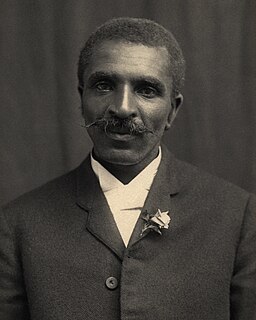 W
WGeorge Washington Carver was an American agricultural scientist and inventor who promoted alternative crops to cotton and methods to prevent soil depletion. He was the most prominent black scientist of the early 20th century.
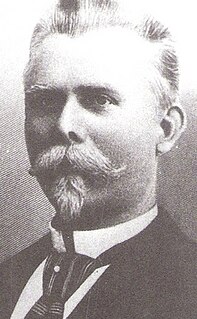 W
WWilliam C. Edenborn, was an inventor, steel industrialist, and railroad magnate. He patented the design for a machine for inexpensive manufacture of barbed wire. Edenborn founded the Louisiana Railway and Navigation Company, which operated between Shreveport, Louisiana, and New Orleans, Louisiana. Through a series of mergers and acquisitions, this railroad formed the Louisiana and Arkansas Railroad and eventually part of the Kansas City Southern Railroad.
 W
WEllen Alida Rose was an American practical agriculturist and woman suffragist. She was one of the first and most active members of the Grange. Through Rose's efforts and the members of the National Grange Organization, the anti-option bill was passed. She was a prominent member of the Patrons of Industry and by her lectures and publications, did much to educate the farmers in the prominent reforms of the day, in which the advancement of women was one which always interested her. Rose was an active worker in the National Woman Suffrage Association, and in 1888, was appointed District President of that organization.
 W
WCharles Louis Flint was a lawyer, cofounder and first secretary of the Massachusetts Board of Agriculture, a lecturer in cattle and dairy farming, the first secretary of the Massachusetts Agricultural College Board of Trustees and the college's fourth president.
 W
WHarry Lucian Garrigus was an American animal scientist, livestock breeder, and educator who worked at the University of Connecticut (UConn) from 1900 to 1942. Garrigus served as Professor of Animal Husbandry from 1907 until his retirement. Two of his sons and one of his grandsons followed in his footsteps, teaching animal sciences at public universities in the Upper South and Midwest.
 W
WCharles Anthony Goessmann, known in his native German as Karl Anton Gößmann, was a Massachusetts agricultural and food chemist.
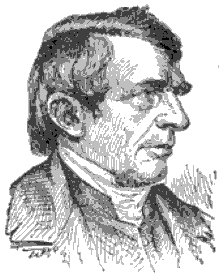 W
WBenjamin Hale was an American educator and clergyman in the nineteenth century. He is notable for teaching at Dartmouth College and becoming the first instructor of the first vocational school in America.
 W
WWilliam Dempster Hoard was an American politician, a newspaper editor, and the 16th Governor of the U.S. state of Wisconsin from 1889 to 1891.
 W
WAugust Ludwig "Gus" Hormay (1907–1999) developed and applied the concept of the rest-rotation grazing management system in areas of the Western United States. Rest-rotation rangeland management system uses deferred grazing to manage increased plant reproduction and maintenance, while providing grazing lands for both livestock and wildlife. Gus Hormay's rest-rotation management system was developed to increase a healthy plant community, watershed, soil and wildlife habitat, while at the same time increasing livestock production. It has been in use in various forms since the mid-1960s as a rangeland management tool.
 W
WOtto Frederick Hunziker was a pioneer in the American and international dairy industry, as both an educator and a technical innovator. Hunziker was born and raised in Switzerland, emigrated to the U.S., and studied at Cornell University. He started and developed the dairy program at Purdue University when such programs were at their infancy. At this same time, Hunziker was heavily involved with the development of the American Dairy Science Association (ADSA) and the standardization and improvement of many dairy tests and processes. Hunziker wrote several of the leading dairy processing texts, which continue to be cited. After leaving Purdue University, Hunziker managed research and operations at a large, national condensary, continued to drive ADSA's standardization and publishing efforts, represented the U.S. at international dairy congresses, and facilitated dairy industry improvements across the globe.
 W
WJames Irvin was an American politician. Irvin was a prominent agriculturalist and ironmaster in Centre County, Pennsylvania. Irvin represented Pennsylvania's 14th congressional district in the 27th and 28th Congresses. Irvin unsuccessfully ran for governor of Pennsylvania in 1847, losing to incumbent governor Francis Rawn Shunk.
 W
WWilliam Marion Jardine was a U.S. administrator and educator. He served as the United States Secretary of Agriculture from 1925 to 1929 and as the U.S. Minister to Egypt from 1930 to 1933.
 W
WEdward Hopkins Jenkins was an American agricultural chemist who served as director of the Connecticut Agricultural Experiment Station from 1900 to 1923. He also directed the Storrs Agricultural Experiment Station from 1912 to 1923. Jenkins oversaw the writing of hundreds of agricultural publications during his tenure, specializing in the culture, cure, and fermentation of tobacco.
 W
WJohn Hancock Klippart (1823–1878) was an American agriculturist and expert on wheat farming.
 W
WElwyn Marshall Meader was an American botanist and plant scientist. Over the course of his career, Meader developed over 50 new strains of plum, peach, squash, rutabaga, sweet corn, melon, watermelon, salad bean, pod bean, pepper, pumpkin, nectarine, bush cherry, kiwi fruit, persimmon, cranberry, raspberry, and blueberry. He developed the Miss Kim Lilac from seeds of a wild lilac bush he found in the mountains of Korea and decided to name it after "all the Miss Kims in Korea".
 W
WManly Miles was an American zoologist and agriculturalist.
 W
WIsaac Newton was an agriculturalist who became the first United States Commissioner of Agriculture.
 W
WJohn Hare Powel was an American agriculturist, politician, art collector and philanthropist from Pennsylvania.
 W
WSonny Ramaswamy is an Indian American agricultural scientist who currently serves as President and CEO of Northwest Commission on Colleges and Universities. For a six year term (2012-2018), he was Administrator of National Institute of Food and Agriculture.
 W
WCyril Adelbert Stebbins (1880–1953) was an American educator involved with nature and agricultural education. His publications in the early twentieth century were influential in promoting gardening in children's education, and he wrote much of the curriculum for the United States School Garden Army, a federal victory garden project during World War I. He wrote several publications with Ernest Brown Babcock and published several field guides to birds with his son Robert C. Stebbins.
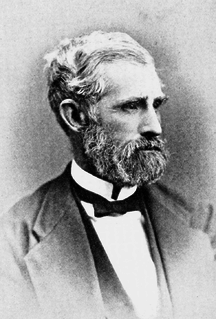 W
WLevi Stockbridge was a farmer and scientist from Hadley, Massachusetts. He was instrumental in the early history of the Massachusetts Agricultural College now known as the University of Massachusetts Amherst.
 W
WRoscoe Wilfred Thatcher was an American agriculturist. He was born and raised on a farm in Chatham Center, Ohio, and studied at the University of Nebraska. He began his academic career at Washington State College, becoming head of the Department of Agriculture there.
 W
WMason Vaugh was an American agriculturalist who developed the first agricultural engineering department outside North America in 1921 at Allahabad Agricultural Institute. He also served in the US Army during World War I.
 W
WElkanah Watson was a visionary traveler and writer, agriculturist and canal promoter, banker and businessman. He was born in Plymouth, Massachusetts and died at Port Kent, New York. He worked in Albany, New York for several years, founding the State Bank of Albany. After retiring in 1807 to a farm in Massachusetts, he raised Merino sheep and founded the agricultural fair, first organizing one at Pittsfield.
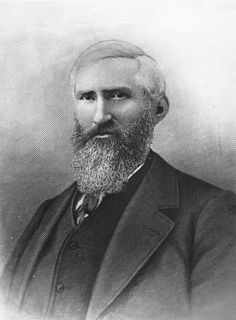 W
WJohn Reid Wolfskill was a California pioneer who helped establish development of California's agricultural industry in the Sacramento Valley in the 19th century. In 1842, Wolfskill was the first settler to plant vineyards and fruit trees there. Born in the Bluegrass region of Kentucky, he migrated to join his brother William in California, where they bought land near Sacramento. Wolfskill became a pioneer of Solano County: "he was the first English speaking man to settle in the area around what is now Winters, California".
 W
WWilliam Wolfskill (1798–1866) was an American-Mexican pioneer, cowboy, and agronomist in Los Angeles, California beginning in the 1830s. He had earned money for land in a decade as a fur trapper near Santa Fe, New Mexico, where he had become a Mexican citizen. This enabled him to own land in California.
 W
WAlbert Franklin Yeager was an American horticulturalist. From his work developing hardy vegetables and fruits at the North Dakota Agricultural College (NDAC) and the North Dakota Agricultural Experiment Station (NDAES), he was known as the "plant wizard of the north" and the "Luther Burbank of North Dakota."